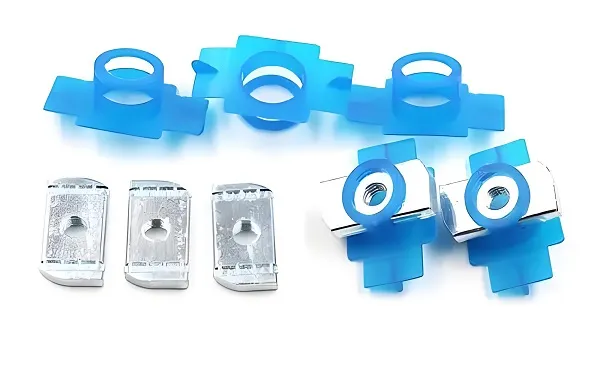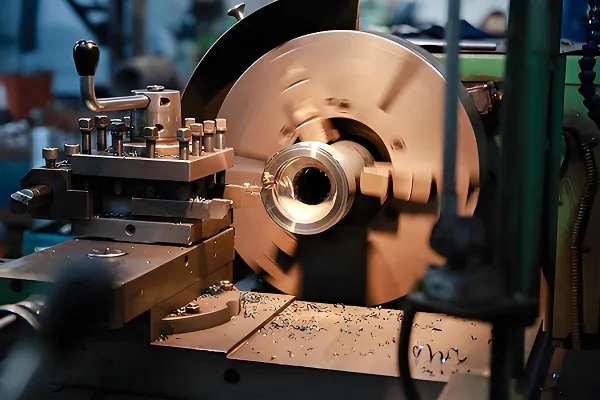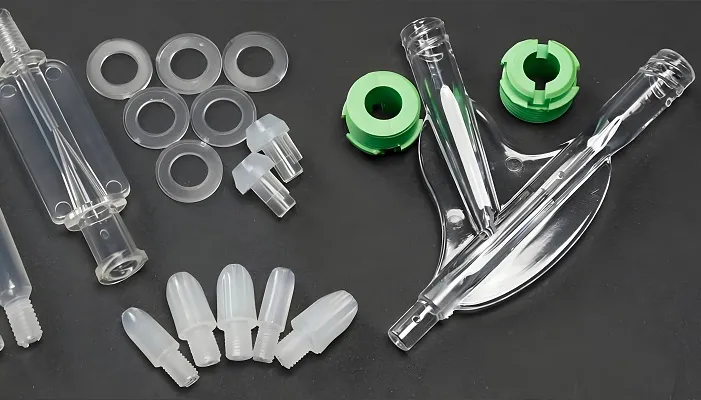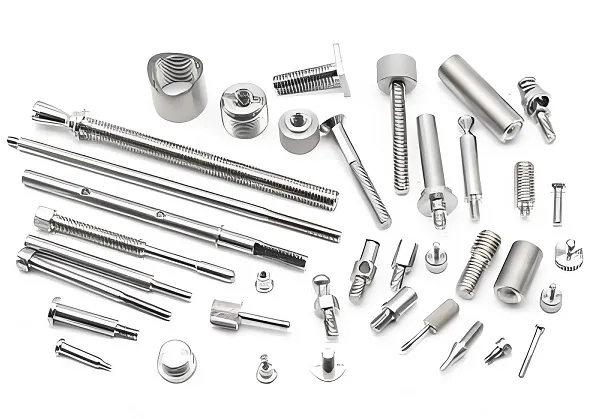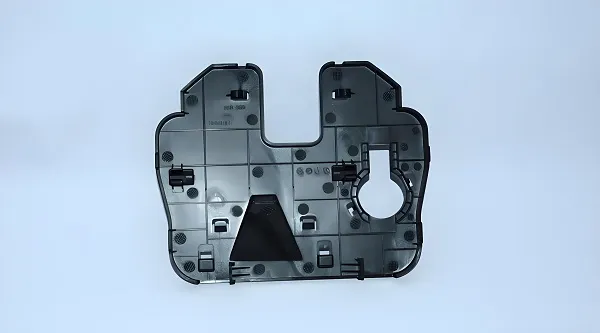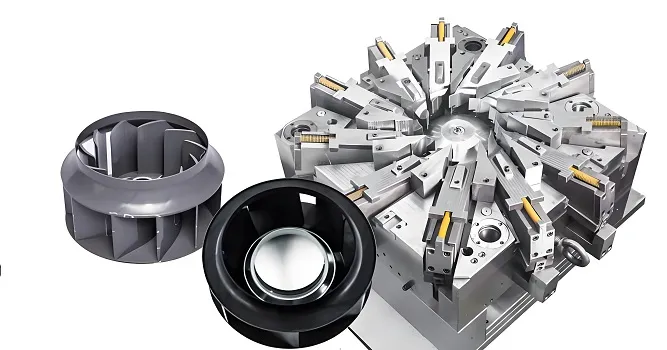What is CNC Machining
In the grand landscape of modern manufacturing, CNC machining shines like a brilliant star, holding a crucial position. It is a key force driving the development of various industries. From precision and complex aerospace components to the electronic products we use in daily life, the presence of CNC machining is ubiquitous.
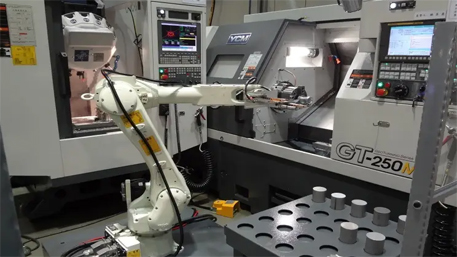
CNC, namely Computer Numerical Control. Simply put, CNC machining utilizes computer programs to precisely control the operation of machine tools. Different from traditional manual processing methods, operators do not need to continuously manually control the machine tool during the processing. They only need to write detailed processing programs on the computer in advance, and the machine tool can automatically complete various complex processing tasks such as cutting, drilling, and milling based on these instructions. This automated processing method not only greatly improves production efficiency, but more importantly, it can ensure that the processing accuracy reaches an extremely high level and produces highly consistent products.
How Does CNC Machining Operate
The operation process of CNC machining is a precise process that integrates advanced technology and precise craftsmanship, mainly covering three key stages: design, programming, and processing.
Design stage
In the design stage, designers will carefully construct a 3D model of the product with the aid of professional computer-aided design (CAD) software. This model is like a detailed blueprint that precisely depicts the shape, size, and various detailed features of the product. Taking the design of automotive engine components as an example, engineers will use CAD software to meticulously design every complex surface and precise size to ensure that the components can meet extremely high precision requirements in the subsequent processing and satisfy the strict needs of the efficient operation of the engine. Similarly, in the aerospace field, the wing structure design of aircraft also relies on CAD software. Through precise 3D modeling, it can ensure the wing strength while minimizing the weight to the greatest extent and improving the flight performance of the aircraft.
Programming stage
The programming stage is a key link in converting the design model into a numerical control program that the machine tool can understand. At this stage, computer-aided manufacturing (CAM) software plays an important role. It will take the 3D model created by CAD software and, through a series of complex calculations and conversions, generate specific numerical control programs, such as common G codes. The G code is like the “language” of the machine tool. It contains various detailed instructions that can precisely control the movement trajectory, cutting speed, feed rate, and other key processing parameters of the machine tool. For example, when processing a complex mold, the G code will precisely indicate when the machine tool performs linear cutting, when it performs circular cutting, and the depth and speed of the cutting, ensuring that every detail of the mold can be precisely processed.
Processing stage
When programming is completed, it enters the processing stage. At this time, the machine tool will start the automatic processing of the workpiece strictly according to the instructions of the numerical control program. Operators will first firmly clamp the workpiece on the machine tool and then start the machine tool. The spindle of the machine tool will drive the tool to rotate at high speed. At the same time, the worktable will precisely move the workpiece according to the path set by the program, enabling the relative movement between the tool and the workpiece, thereby achieving various processing operations such as cutting, drilling, and milling of the workpiece. Throughout the processing process, the movement accuracy of the machine tool can reach the micron level, ensuring that the processed products have extremely high precision and consistency. For example, when processing precision electronic components, the machine tool can perform precise processing within a very small size range to ensure the performance and quality of the components.
Advantages of CNC Machining
High precision
The high precision of CNC machining is one of the key factors that make it highly favored in modern manufacturing. The processing error of ordinary CNC equipment can usually be controlled at about ±0.05mm, while high-precision CNC equipment can stably control the processing error within ±0.01mm. As for ultra-precision processing equipment, the error can even be as low as the nanometer level, reaching ±0.001mm. What does such high precision mean? We can make a vivid comparison with human hair. The diameter of human hair is approximately 0.07mm, and the error of high-precision CNC machining is far less than the thickness of human hair. This high precision has inestimable significance for the manufacturing of precision parts. In the aerospace field, the manufacturing of turbine blades for aircraft engines is inseparable from the high-precision support of CNC machining. Turbine blades in the engine have to withstand the impact of high temperatures, high pressures, and high-speed airflows. Small deviations in their shape and size may lead to a decrease in engine performance and even cause serious safety accidents. Through the high-precision control of CNC machining, it can ensure that every surface and size of the turbine blade is precise and error-free, thereby ensuring the efficient and stable operation of the engine.
High flexibility
CNC machining has extremely high flexibility and can easily handle various complex shapes and diverse design requirements. This characteristic makes it show wide applicability in different industries. Whether it is aerospace engine blades with complex surfaces, micro-parts of medical devices with fine structures, or irregularly shaped art sculptures, CNC machining can precisely process according to the design requirements by virtue of its advanced programming technology and multi-axis linkage function. Taking the mold manufacturing in the automotive industry as an example, the molds for automotive body panels usually have very complex surface shapes. The design of these surfaces not only needs to consider the appearance of the vehicle but also takes into account various factors such as aerodynamics. CNC machining can precisely control the tool path through programming and precisely process these complex surfaces on the mold, providing a strong guarantee for the appearance design and performance improvement of the vehicle. In the field of electronic product manufacturing, with the miniaturization and functional integration of products, the requirements for the shape and size accuracy of components are getting higher and higher, and the product update speed is extremely fast. CNC machining can quickly adjust the processing program according to different design requirements and realize the processing of various new components to meet the rapidly changing market demands of the electronic product industry.
High efficiency
Automated processing is the core of achieving high efficiency in CNC machining. Once the operator completes the writing and debugging of the processing program and correctly clamps the workpiece on the machine tool, the machine tool can automatically and continuously complete the entire processing process according to the program instructions without the need for continuous manual intervention. This greatly reduces the time and labor intensity of manual operation and avoids processing errors caused by manual fatigue or operational mistakes, effectively improving production efficiency and the stability of product quality. In batch production, the efficiency advantage of CNC machining is even more significant. Taking the production of mobile phone shells as an example, the traditional processing method may require a large amount of manual operation, and manual handling and adjustment are also needed between each process, resulting in a long production cycle. While using CNC machining, only the design program of the mobile phone shell needs to be input into the machine tool, and the machine tool can complete the processing of multiple mobile phone shells in a short time, and the size and quality of each shell can be kept highly consistent. Through automated continuous processing, CNC machining can produce more products in the same amount of time to meet the market demand for product quantity. In addition, CNC machining can also achieve multi-task processing. One machine tool can perform multiple different processing operations simultaneously, further improving production efficiency.
Common Types of CNC Machining
CNC Milling
CNC milling is an extremely common type of CNC machining and plays a crucial role in modern manufacturing. Its processing principle is based on the relative movement between the tool and the workpiece. Through a high-speed rotating milling cutter, along the pre-set program path, the workpiece is subjected to cutting processing to precisely remove materials and achieve the precise shaping of the workpiece’s shape and size.
In practical applications, CNC milling shows wide applicability. In the aerospace field, it is used to manufacture the blades of aircraft engines. These blades usually have complex curved shapes and extremely high requirements for precision and performance. CNC milling can precisely process each curved surface of the blades through multi-axis linkage to ensure that the blades can still maintain good performance in the environment of high temperature, high pressure, and high-speed rotation. In the automotive manufacturing industry, the manufacturing of automotive molds also cannot do without CNC milling. The shape of automotive molds is complex and has high precision requirements. CNC milling can precisely process the cavity and core of the mold according to the design requirements to provide high-quality molds for the production of automotive parts. In the field of electronic equipment manufacturing, CNC milling is often used to process components such as mobile phone shells and computer motherboards. These components usually have the characteristics of high precision and small size. CNC milling can meet their strict requirements for precision and surface quality to ensure the performance and appearance of the products.
CNC Turning
CNC turning is another important type of CNC machining, mainly used for processing rotational parts such as shafts, discs, sleeves, etc. During the processing, the workpiece is firmly fixed on the main shaft of the lathe and rotates synchronously with the high-speed rotation of the main shaft. At the same time, the tool will precisely move along a specific path according to the pre-written numerical control program to perform cutting processing on the rotating workpiece. In this way, various size and shape parameters such as the outer diameter, inner diameter, length, taper, and thread of the workpiece can be precisely controlled to process rotational parts that meet high-precision requirements.
CNC turning has wide applications in the manufacturing industry. In the field of mechanical manufacturing, various shaft parts are key components of mechanical equipment, and their precision and quality directly affect the performance of the entire equipment. CNC turning can efficiently and precisely process various shaft parts to meet the needs of different mechanical equipment. In the automotive manufacturing industry, important components such as crankshafts and camshafts of engines all need to undergo precision processing through CNC turning. These components have extremely high precision requirements, and CNC turning can ensure their dimensional accuracy and surface quality, thereby ensuring the efficient and stable operation of the engine. In the aerospace field, shaft parts of aircraft engines also require high-precision processing by CNC turning. These parts operate in extreme working environments and have extremely high requirements for their performance and reliability. CNC turning can meet these strict requirements and provide strong support for the development of the aerospace industry.
Other processing types
In addition to CNC milling and turning, CNC machining also includes many other types, each playing a unique and irreplaceable role in specific fields.
Electrical discharge machining is a processing method that utilizes the principle of discharge corrosion. During the processing, a pulsed voltage is applied between the tool electrode and the workpiece. When the distance between the two is small enough, an electrical discharge phenomenon occurs. The high temperature generated instantaneously during the discharge can rapidly melt and vaporize the metal material on the surface of the workpiece, thereby achieving the processing of the workpiece. This processing method is particularly suitable for processing materials with high hardness, high melting points, as well as parts with complex shapes and fine structures. In the field of mold manufacturing, electrical discharge machining is often used to process the cavities of injection molds and the cores of die-casting molds. The shapes of these molds are complex, and traditional mechanical processing methods are difficult to achieve high-precision processing, while electrical discharge machining can process mold parts that meet the requirements by precisely controlling the discharge parameters.
Laser processing is a method that utilizes a laser beam with high energy density to process materials. When the laser beam irradiates the surface of the workpiece, it can rapidly melt, vaporize, or sublimate the material, thereby achieving various processing operations such as cutting, drilling, welding, and surface treatment. Laser processing has the advantages of high precision, high speed, and non-contact processing and has wide applications in fields such as electronics, medicine, and aerospace. In the field of electronic manufacturing, laser processing is often used for operations such as cutting circuit boards and drilling holes. Due to the increasingly smaller size of electronic components and the higher requirements for processing accuracy, laser processing can meet these high-precision processing requirements and ensure the performance and quality of electronic components. In the medical field, laser processing can be used to manufacture micro-parts of medical devices such as heart stents and implantable sensors. The precision and quality of these parts are directly related to the life and health of patients. The high precision and reliability of laser processing can provide high-quality components for the medical industry.
CNC Machining Materials
Common processing materials
In the field of CNC machining, the selection of materials is rich and diverse, covering multiple categories such as metals, plastics, and composite materials.
Aluminum alloy is one of the commonly used metal materials in CNC machining. Its density is approximately 2.7g/cm³, and it has a significant advantage of being lightweight compared to other metals. At the same time, aluminum alloy also has excellent thermal conductivity, with a thermal conductivity coefficient of about 200W/(m・K), and outstanding corrosion resistance. Taking the aircraft wings in the aerospace field as an example, the lightweight property of aluminum alloy can effectively reduce the weight of the aircraft and improve fuel efficiency; its good corrosion resistance ensures the long-term stable operation of the wings in the complex high-altitude environment. In the automotive manufacturing industry, aluminum alloy is often used to manufacture components such as engine blocks and wheels, which can not only meet the requirements for the strength and hardness of the parts but also achieve the lightweight of the vehicle and improve the performance and fuel economy of the vehicle.
Steel also holds an important position in CNC machining, including various types such as carbon steel, stainless steel, and alloy steel. Carbon steel has high strength and hardness. The tensile strength of No. 45 carbon steel can reach about 600MPa and is widely used in mechanical parts, tool components, and other fields. For example, in machine tool manufacturing, many key mechanical components such as lead screws and guide rails are made of carbon steel to ensure the high precision and stability of the machine tool. Stainless steel is known for its excellent corrosion resistance. Common 304 stainless steel has good corrosion resistance in general atmospheric environments and weak corrosive media and is often used to manufacture products with high requirements for hygiene and corrosion resistance such as medical devices and food processing equipment. Alloy steel can obtain various special properties such as high strength, high toughness, and high temperature resistance by adding different alloying elements such as chromium, nickel, and molybdenum, and has wide applications in high-end fields such as aerospace and energy.
ABS plastic is a common engineering plastic with good mechanical properties, and its tensile strength can reach about 40MPa. At the same time, its processability is also very excellent. It is suitable for making models, electronic product housings, etc. In electronic product manufacturing, many mobile phone housings and tablet computer housings are made of ABS plastic because it can not only meet the requirements for the appearance and structural strength of the products but also is easy to be processed and formed to achieve various complex appearance designs.
Carbon fiber composite material is a high-performance composite material that has extremely high strength. Its tensile strength can reach more than 3500MPa, and it also has the characteristic of lightweight, with a density of only about 1.7g/cm³. This material is widely used in the aerospace field, such as the fuselage and wings of aircraft. In the field of automotive sports equipment, carbon fiber composite materials are also often used to manufacture high-end bicycle frames and racing car bodies, which can improve the performance and competitive level of the products.
Application scope
Different materials play irreplaceable roles in various fields due to their unique performance characteristics.
In the aerospace field, the performance requirements for materials are extremely strict, and they need to simultaneously meet multiple conditions such as high strength, lightweight, high temperature resistance, and corrosion resistance. Aluminum alloys, titanium alloys, and carbon fiber composite materials are ideal choices. Aluminum alloys are widely used in aircraft fuselage structures, wings, engine components, etc. due to their lightweight, high strength, and good processing performance. Titanium alloys are often used to manufacture high-temperature components of engines such as turbine blades and combustion chambers due to their excellent high-temperature and corrosion resistance properties. Carbon fiber composite materials provide strong support for the lightweight design of aircraft with their ultra-high strength-to-weight ratio, which can effectively improve the fuel efficiency and flight performance of aircraft.
The automotive manufacturing industry also relies on the diversity of CNC machining materials. Steel is used to manufacture key components of automobiles such as vehicle frames, engine blocks, and drive shafts to ensure the strength and safety of the vehicle. Aluminum alloys play an important role in the lightweight trend of automobiles and are used to manufacture engine cylinder heads, wheels, and body panels, which can effectively reduce the weight of the vehicle and improve fuel economy and handling performance. Plastic materials such as ABS plastic and nylon are often used to manufacture automotive interior parts and electrical enclosures. They not only have good processing performance and appearance effects but also can reduce the weight of the vehicle.
In the field of electronic equipment manufacturing, the choice of materials focuses on their conductivity, insulation, processing accuracy, and appearance texture. Copper materials are often used to manufacture conductive components in electronic parts such as circuit board lines and electronic connectors due to their excellent conductive performance. Aluminum alloys are widely used in the manufacturing of electronic product housings and radiators due to their good heat dissipation performance and lightweight characteristics. They can effectively dissipate heat and reduce the weight of the product. Plastic materials such as ABS plastic and PC plastic are often used to manufacture the housings of electronic products. They have good formability and appearance effects and can meet the diverse design requirements of electronic products for appearance.
Selecting the Appropriate CNC Machining Service
Evaluating the capabilities of suppliers
When choosing a CNC machining service provider, comprehensively evaluating their capabilities is the key to ensuring processing quality and the smooth progress of the project. Advanced equipment is the basis for achieving high-precision machining. It is crucial to investigate whether the supplier is equipped with high-precision CNC machining centers and whether they have equipment with multi-axis linkage functions. Multi-axis linkage machining enables the tool to move simultaneously in multiple directions, achieving one-time forming of complex-shaped parts, which not only greatly improves processing accuracy but also significantly enhances processing efficiency. Taking the processing of impellers of aircraft engines as an example, the blade shape of the impeller is complex and has extremely high precision requirements. Only CNC machining equipment with five-axis linkage functions can complete the processing of all blades in one clamping to ensure the angle and size accuracy between the blades and meet the high-performance requirements of aircraft engines.
In addition to equipment, the level of the supplier’s technical team should not be ignored. Experienced engineers and operators are the core forces for achieving high-quality machining. Understand whether they have rich experience in CNC programming and operation, whether they are familiar with various CAD/CAM software, and whether they can quickly and efficiently generate accurate processing programs based on the part’s design drawings. At the same time, technicians also need to have an in-depth understanding of the processing characteristics of different materials. Whether it is alloy materials with extremely high hardness or special engineering plastics with strong toughness, they can select appropriate cutting parameters and processes based on their characteristics to ensure the smooth progress of the processing and the stability and reliability of the processing quality. For example, when processing titanium alloy materials, due to the high chemical activity and poor thermal conductivity of titanium alloys, problems such as rapid tool wear and poor processing surface quality are prone to occur during the processing. This requires technicians to have rich experience, reasonably adjust parameters such as cutting speed, feed rate, and cutting depth, and select appropriate tool materials and coatings to ensure processing quality and efficiency.
Communicating Needs and Expectations
Clear and effective communication with the supplier is an important prerequisite for ensuring that the processing results meet expectations. At the beginning of the cooperation, you should elaborate your needs to the supplier in detail, including key information such as the product’s design drawings, dimensional tolerance requirements, surface roughness requirements, material selection, etc. At the same time, you should also clearly inform the supplier of the project’s delivery time, quality standards, and possible subsequent needs. By providing detailed design drawings and technical requirements, the supplier can accurately understand the design intent of the product and avoid processing errors caused by information misunderstandings. When communicating dimensional tolerance requirements, the tolerance range of each dimension should be clarified to ensure that the supplier can process according to the requirements and meet the assembly and usage requirements of the product. For products with high surface roughness requirements, such as optical lens molds, emphasize the specific values of surface roughness and the detection methods to the supplier so that the supplier can adopt corresponding processing techniques and detection methods to ensure the surface quality of the product.
During the processing process, maintaining close communication with the supplier is equally important. Keep abreast of the processing progress in a timely manner. For possible problems, such as material defects and tool wear found during the processing, solutions should be negotiated with the supplier jointly. The supplier should also timely feedback the actual situation during the processing, such as encountering technical difficulties and equipment failures, so that both parties can adjust the plan in time to ensure the project is delivered on time. After the project is delivered, the product should also undergo strict inspection and evaluation, and product quality problems and improvement suggestions should be timely fed back to the supplier to accumulate experience for subsequent cooperation.

